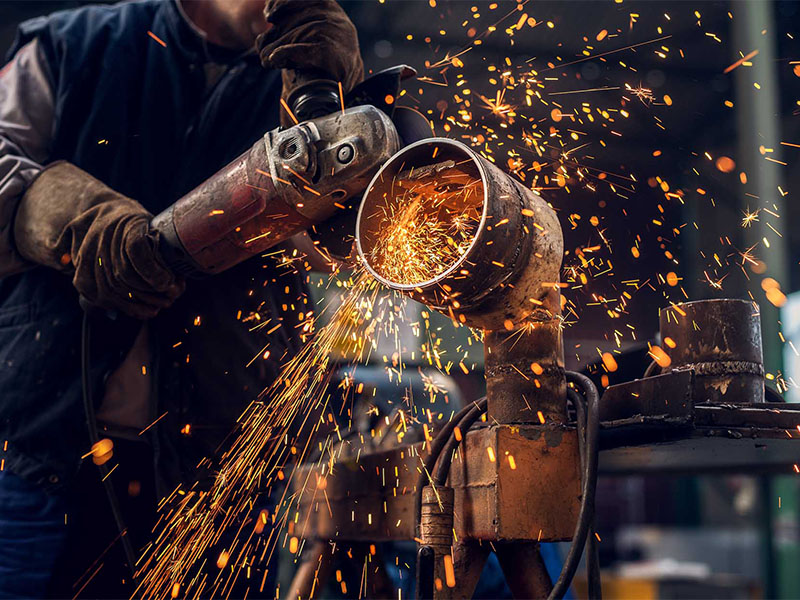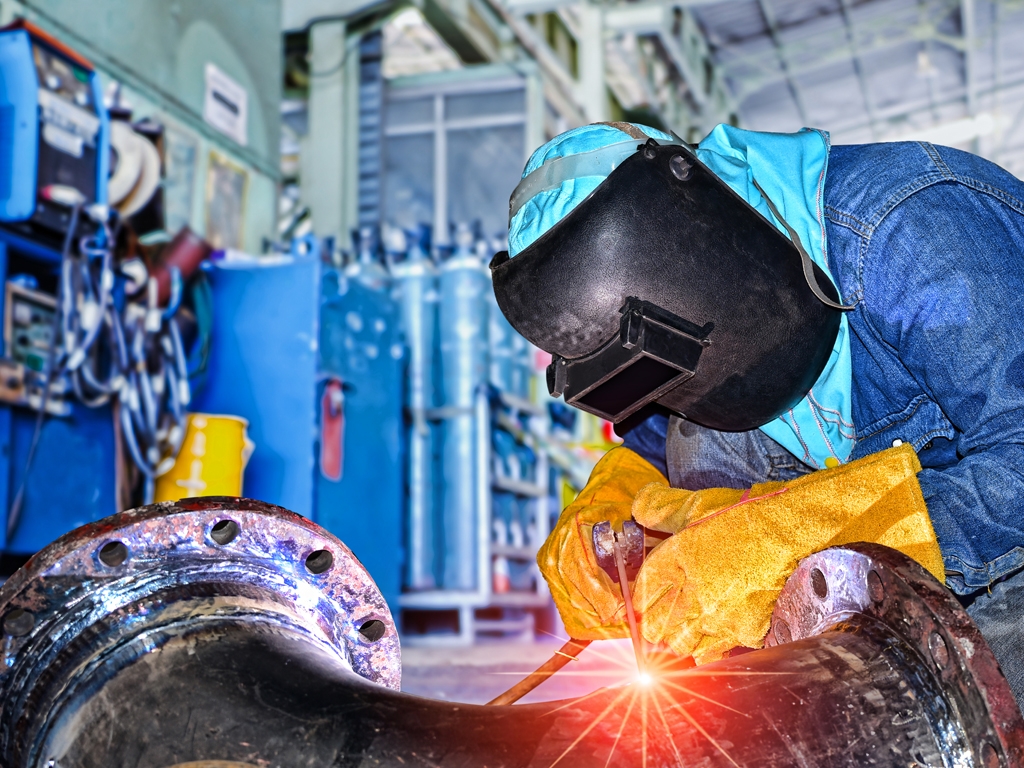Common Welding Repair Service Issues and Just How to Address Them Effectively
Welding repair services commonly encounter a range of problems that can endanger the integrity of the end product. Usual issues include insufficient penetration, porosity, and misalignment, to name a few. Each problem presents one-of-a-kind challenges that require details strategies for resolution. Understanding these problems is essential for welders aiming to boost their abilities and outcomes. This discussion will check out these common welding repair service concerns and reliable approaches to resolve them.
Inadequate Infiltration
Inadequate infiltration happens when the weld steel falls short to fully fuse with the base product, resulting in weak joints and potential architectural failures. This issue typically comes from insufficient warmth input, wrong electrode angle, or inappropriate welding speed. Welders might encounter inadequate infiltration due to a miscalculation of the necessary parameters for a specific material thickness or type. In addition, contamination on the base product's surface area can hinder reliable bonding, worsening the problem. To resolve poor infiltration, welders should ensure suitable setups on their tools and keep a tidy work surface. Routine inspection of welds is advised to determine any type of shortages early, enabling for prompt corrections and the avoidance of endangered architectural integrity in welded assemblies.
Porosity
Porosity is a common defect in bonded joints that manifests as small gas bubbles entraped within the weld steel. This issue can compromise the stability of the weld, bring about reduced toughness and possible failing under tension. Montana Mobile Welding and Repair Welding. Porosity normally occurs from contamination, wetness, or improper welding techniques, which permit gases to leave into the molten weld swimming pool. To attend to porosity, welders ought to assure appropriate surface area preparation, maintain a tidy workplace, and use appropriate welding specifications. In addition, picking the appropriate filler material and securing gas can alleviate gas entrapment. Routine assessment and screening of welds can help determine porosity early, assuring timely corrective actions are taken, therefore protecting the high quality and integrity of the welded structure
Imbalance
Imbalance in welding can emerge from numerous aspects, including inappropriate setup and thermal growth. Comprehending the root creates is important for effective resolution. Numerous improvement techniques are available to realign elements and assure structural honesty.
Sources of Misalignment
Welding misalignment typically stems from a selection of underlying problems that can endanger architectural stability. One main reason is incorrect fit-up of elements prior to welding, which can cause gaps and uneven surface areas. Variants in thermal growth during the welding process can also lead to distortion, particularly if the materials being signed up with have various coefficients of development. Additionally, poor fixturing and clamping might fall short to hold elements firmly in position, leading to motion throughout welding. Badly maintained tools, including welding makers and tools, might present inconsistencies in the weld bead, further adding to misalignment. Lastly, driver error, originating from inadequate training or experience, can additionally play a substantial role in producing misaligned welds.
Modification Methods Offered
Addressing misalignment effectively needs a combination of restorative strategies customized to the details problems available. One common technique is making use of jigs or components to hold components in the proper setting throughout welding, making certain constant placement. Furthermore, preheating the materials can help lower distortion and enhance fit-up. For significant imbalance, mechanical adjustment strategies, such as making use of hydraulic jacks or clamps, can be employed to fix the setting before welding. Post-weld warmth therapy might likewise be required to relieve stress and anxieties triggered by imbalance. Mindful evaluation and modification throughout the setup phase can protect against imbalance issues from coming to be substantial problems, advertising a smoother welding procedure and enhancing total architectural stability.
Distortion
Distortion is a typical difficulty in welding that can arise from different factors, consisting of irregular home heating and cooling. Comprehending the root causes of distortion is essential for applying efficient avoidance methods. Addressing this concern not only improves structural integrity yet additionally boosts the total top quality of the weld.
Sources of Distortion
When based on the extreme heat of welding, products commonly go through changes that can result in distortion. This sensation mostly arises from thermal growth and tightening during the welding procedure. As the weld area heats up, the product broadens; upon air conditioning, it acquires, which can create internal stress and anxieties. Additionally, unequal heating across a work surface can worsen these anxieties, causing bending or flexing. The sort of product additionally plays a considerable role; steels with differing thermal conductivity and coefficients of expansion may react in different ways, resulting in unforeseeable distortions. Poor joint style and inadequate fixturing can add to imbalance during welding, enhancing the chance of distortion. Comprehending these causes is crucial for reliable welding repair and avoidance techniques.
Avoidance Techniques
Efficient avoidance methods for distortion during welding emphasis on regulating warm input and making sure proper joint layout. Preserving a regular heat input aids to reduce thermal development and tightening, which can bring about distortion. Utilizing methods such as pre-heating the work surface can also minimize the temperature slope, advertising consistent heating. Additionally, choosing suitable joint styles, such as T-joints or lap joints, can enhance stability and reduce tension concentrations. Applying correct fixturing to protect the workpieces in area further help in keeping positioning during the welding procedure. Staggered welding sequences can distribute heat much more uniformly, preventing localized distortion. By applying these methods, welders can greatly reduce the chance of distortion and boost the total quality of their welds.
Fracturing
Fracturing is a common concern experienced in welding repairs, typically resulting from different factors such as inappropriate cooling prices, product option, or inadequate joint prep work. The incident of cracks can greatly endanger the stability of the weld, resulting in potential failures during procedure. To address this concern, welders should initially analyze the origin, making certain that products are suitable and appropriately selected for the particular application. Furthermore, regulating the cooling rate throughout the welding procedure is important; rapid cooling can cause stress and anxiety and cause breaking. Proper joint design and preparation also add to lessening the danger. Applying these methods can boost weld high quality and durability, eventually lowering the possibility of fracturing in ended up weldments.

Insufficient Combination
A considerable problem in welding repair work is insufficient combination, which occurs when the weld steel does not effectively bond with the base product or previous weld passes - Montana Mobile Welding and Repair Welding. This defect can cause weak points in the joint, possibly endangering the stability of the bonded structure. Variables contributing to incomplete combination consist of inadequate Click This Link warm input, incorrect welding technique, and contamination of the surfaces being joined. To address this concern properly, welders must assure correct pre-weld cleaning and surface prep work, along with readjust their welding criteria to accomplish ample infiltration and fusion. Normal inspection throughout the welding procedure can likewise aid recognize incomplete blend early, permitting prompt rehabilitative measures to enhance the overall high quality of the weld
Overheating
While welding fixings can enhance architectural stability, overheating provides a substantial obstacle that can lead to material degradation. Too much heat throughout welding can modify the mechanical homes of steels, leading to reduced strength, enhanced brittleness, and bending. This phenomenon is especially important in high-stress applications where structural dependability is critical. Recognizing overheating can entail visual examinations for staining or distortion, in addition to monitoring temperature throughout the welding procedure. To reduce the threats connected with getting too hot, welders ought to employ ideal techniques, such as regulating warmth input, adjusting traveling speed, and making use of suitable filler products. Furthermore, applying pre- and post-weld warm treatments can help recover product properties and boost the overall top quality of the repair service, making sure long-term performance and safety and security.
Often Asked Questions
What Are the Typical Signs of a Welding Issue?

Exactly How Can I Examine My Welds for Quality?
To test welds for top quality, one can use aesthetic examinations, ultrasonic screening, and radiographic techniques. Each technique assures structural honesty, determines issues, and validates adherence to specified criteria, inevitably enhancing the reliability of the bonded joints.
What Safety Precautions Should I Take While Welding?
When welding, one should prioritize safety and security by wearing appropriate personal protective tools, making certain correct air flow, safeguarding combustible materials away, maintaining a tidy office, and recognizing environments to avoid accidents and injuries.
Can I Fix a Weld Without Redoing the Entire Joint?
Fixing a weld without renovating the whole joint is possible, relying on the damage (Belgrade Welding). Methods such as grinding, adding filler material, or using a welding process can effectively resolve certain imperfections while maintaining the bordering framework
What Devices Are Essential for Reliable Welding Fixes?
Vital devices for effective welding repairs include a welding equipment, cord brush, grinder, protective gear, clamps, and filler products. Each tool plays an essential role in making certain quality and safety during the fixing procedure. Porosity commonly emerges from contamination, wetness, or inappropriate welding techniques, which allow gases to leave right into the liquified weld swimming pool. Poorly kept devices, consisting of welding devices visit site and devices, may introduce inconsistencies in the weld grain, additional adding to imbalance. When subjected to the extreme warm of welding, materials typically undergo changes that can lead to distortion. Cracking is an usual concern run into in welding fixings, commonly resulting from numerous aspects such welding hammer as incorrect air conditioning rates, material choice, or inadequate joint preparation. A substantial issue in welding fixings is insufficient blend, which occurs when the weld metal does not properly bond with the base product or previous weld passes.